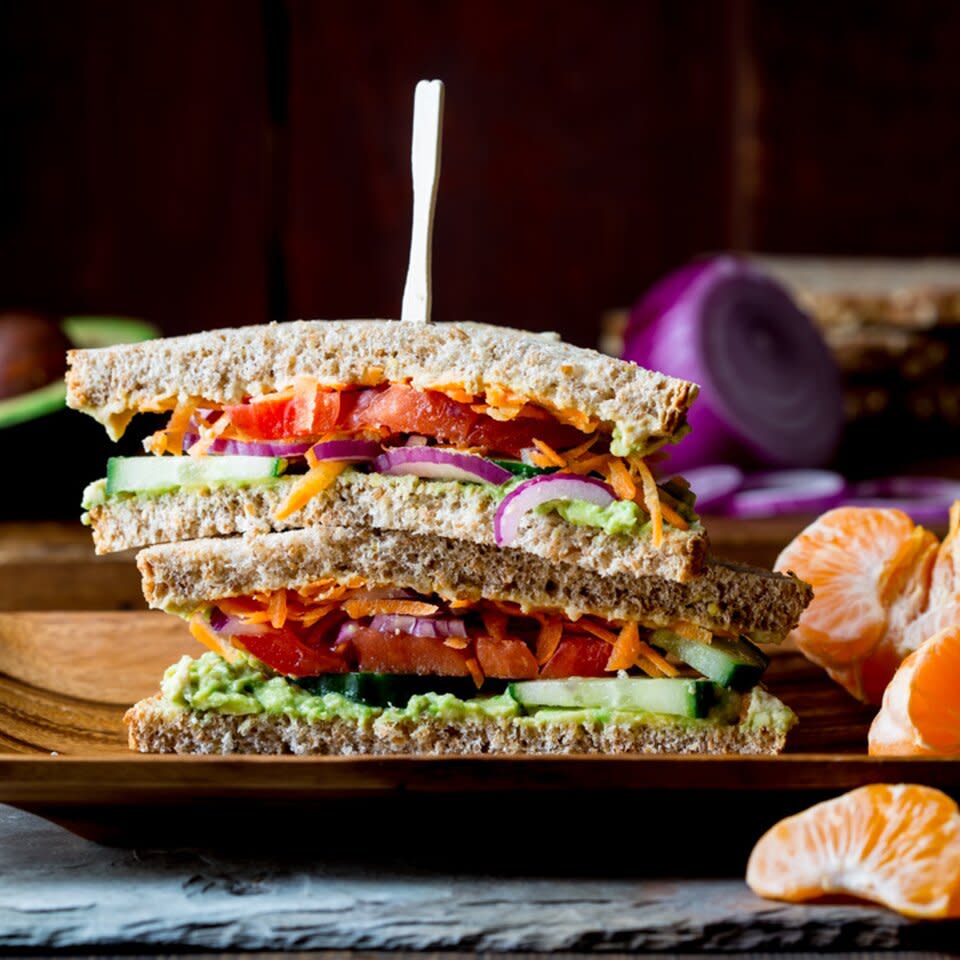How to Make a Delicious & Satisfying Veggie Sandwich
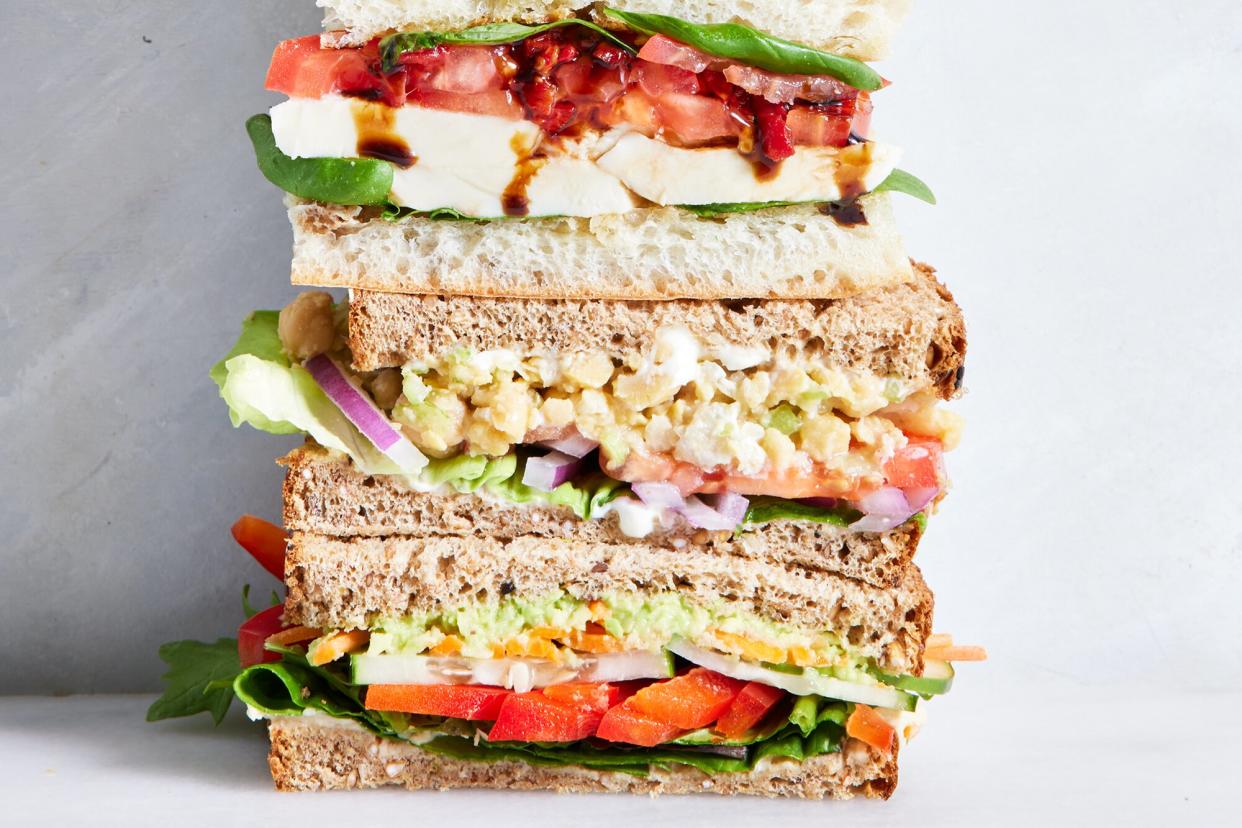
Photographer / Jen Causey, Food Stylist / Ali Ramee, Prop Stylist / Christine Keely
Sandwiches come in all shapes and sizes, and there are endless avenues of possibility and deliciousness. From tuna salad to a classic grilled cheese, sandwiches can be enjoyed at any time. One of our favorite things about sandwiches is that you can pile on the veggies, from crunchy cucumbers to colorful leafy greens. Here, find our expert guide to crafting the tastiest vegetarian sandwich that's packed with protein.
Step #1: Choose Your Bread
Building a sandwich is like building a house—you need a strong foundation or everything will fall apart. Bread is the crucial structural ingredient in a sandwich.
While there are plenty of options in the bread aisle, we suggest choosing a whole-grain loaf. Whole grains are higher in fiber and protein than their refined-grain counterparts, which can help you feel more satisfied for longer after eating. Plus, research shows that eating more fiber can help support gut health and can even reduce your risk of heart disease.
The Dietary Guidelines recommend making at least half of your daily grain consumption whole grains to reap some of these impressive health benefits.
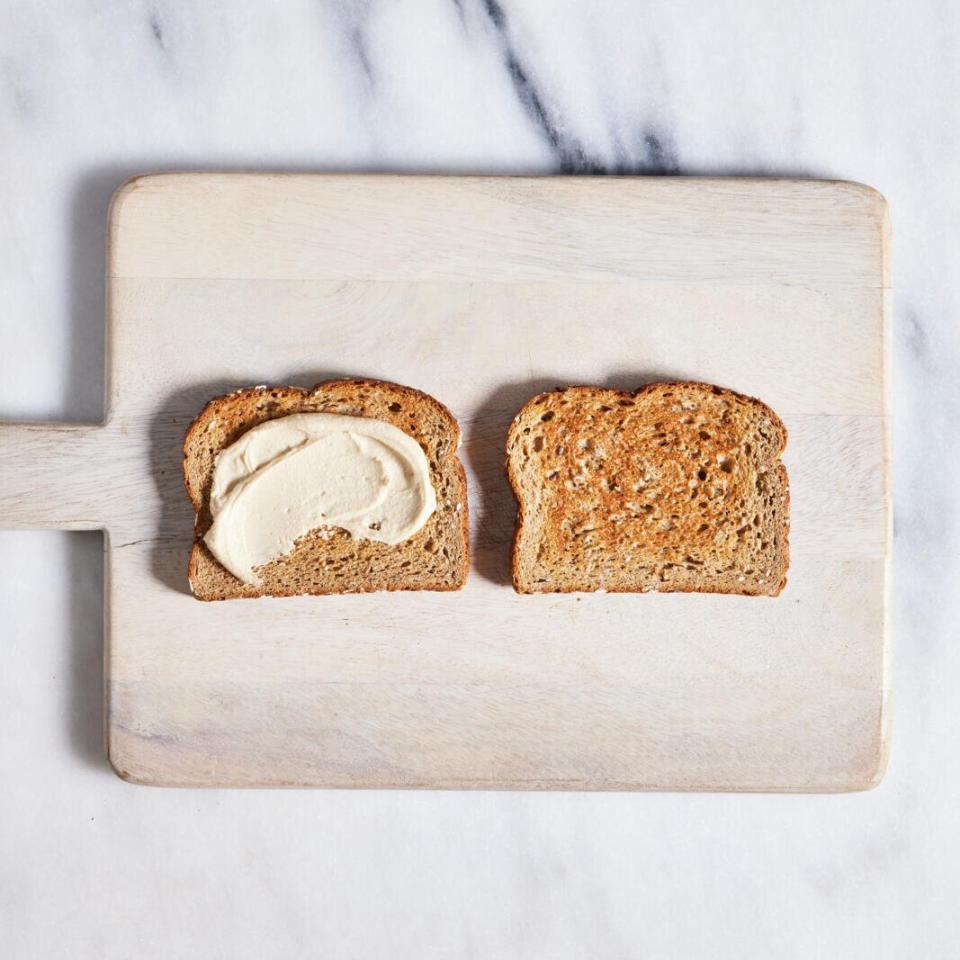
Photographer / Jen Causey, Prop Stylist / Claire Spollen, Food Stylist / Ali Ramee
Here are some of our favorite whole-grain breads:
Flax bread
Seeded bread
Whole-wheat sourdough
Sprouted-grain bread
Sprouted-rye bread
Whole-wheat bread
Some of these breads may also have a refined-grain version, so be sure to check the package and look for 100% whole wheat or another whole grain as the first ingredient to ensure you're getting the full benefits.
Toasting the bread is an optional step, but one that could be beneficial, especially if you're making the sandwich ahead of time. Depending on the veggies you choose, they may be higher in water content, and thus could risk turning the bread soggy. Toasting the bread helps maintain and solidify its structure so you're not left with a sodden mess.
Step #2: Spread on a Creamy Layer
A creamy layer is essential for flavor and structure in a veggie sandwich. Not only does it prevent the sandwich from being dry, but it can help anchor the other ingredients (because no one wants to take a bite only to have the ingredients fall out the other end).
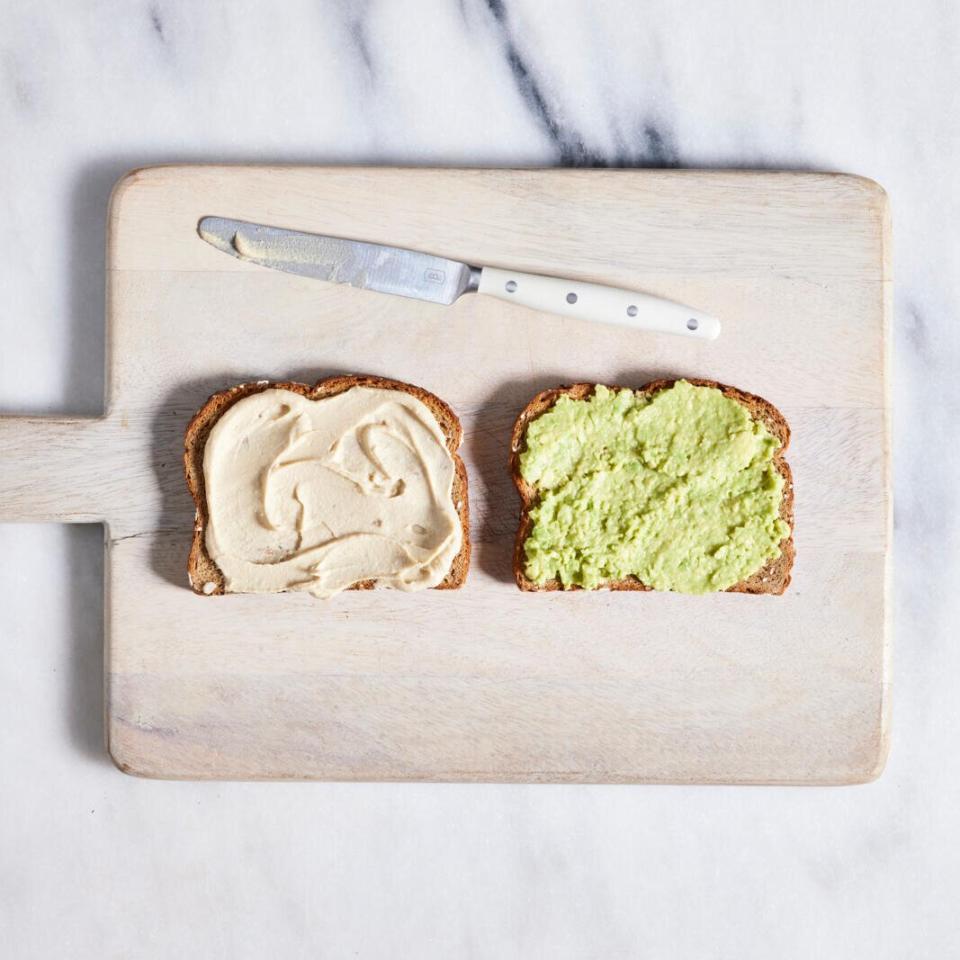
Photographer / Jen Causey, Prop Stylist / Claire Spollen, Food Stylist / Ali Ramee
Here are ingredients that make a delicious creamy spread:
Avocado
Beans
Cream cheese
Goat cheese
Hummus
Plain Greek yogurt
Ricotta cheese
Mayonnaise
The creamy layer is a great way to add protein to your sandwich. Ingredients like Greek yogurt, beans and hummus are some of the top vegetarian protein sources you can add to your diet. If using beans or avocado, mash them to turn them into a nice spreadable consistency. You can also mix and match creamy ingredients, like cutting cream cheese with plain Greek yogurt to add some tangy notes. While mayonnaise doesn't pack the same protein punch as these other ingredients (it's mainly fat), it is a completely acceptable (and delicious) sandwich spread, too.
Step #3: Pile on the Veggies
Now, on to the meat veggies of the matter: the vegetables. In any great sandwich, you want a range of textures and flavors to keep things interesting. When selecting the veggies for your sandwich, aim to add a variety of different colored veggies for their health benefits. Red produce like bell peppers and tomatoes contain lycopene, an antioxidant that helps protect your eyes and skin, while purple veggies like eggplant contain anthocyanins, an antioxidant that can keep your heart healthy.
Depending on the veggies you choose, you may also add some plant-based protein. Veggies like spinach, artichokes and kale are some of the top high-protein vegetables. A 1-cup serving of spinach packs 5 grams of protein, while a 1-cup serving of artichokes has 4 grams of protein. Eating enough protein is crucial to supporting a range of bodily processes, from bone health to blood sugar balance.
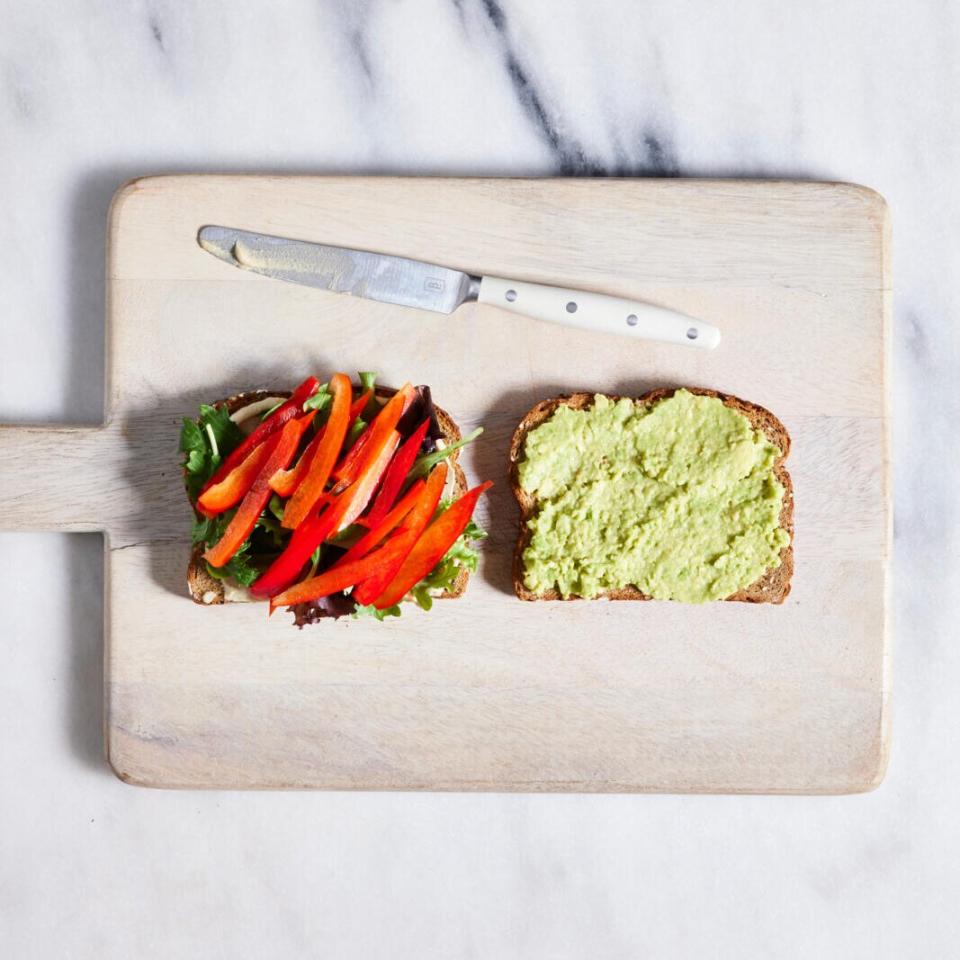
Photographer / Jen Causey, Prop Stylist / Claire Spollen, Food Stylist / Ali Ramee
We recommend choosing at least one vegetable from two of the categories below when building your sandwich.
Crunchy vegetables:
Banana peppers
Bell peppers
Carrots
Celery
Cucumbers
Pickles
Red onion
Snow peas
Leafy vegetables:
Beet greens
Cabbage
Kale
Lettuces
Microgreens/sprouts
Spinach
Watercress
Hardy vegetables: You may opt to cook these hardy vegetables first before adding them to a sandwich.
Artichoke hearts
Beets
Eggplant
Mushrooms
Squash
Tomatoes (yes, we know this is technically a fruit)
When assembling the sandwich, leave a perimeter around the edge of the bread so there's room for ingredients to shift around while you eat without anything falling out.
Step #4: Add the Cheese
While veggies are the true star of the sandwich, adding a slice of cheese can be a tasty accompaniment. If you are already using a spreadable cheese as your creamy element, we recommend skipping an additional slice of cheese to help keep the sodium down. A layer of cheese may also come with some health benefits like cutting your risk for heart disease (thanks to nutrients like calcium, potassium and magnesium) and supporting muscle mass (thanks to its protein content). Adding a slice of cheese is also another way to add some protein to your sandwich.
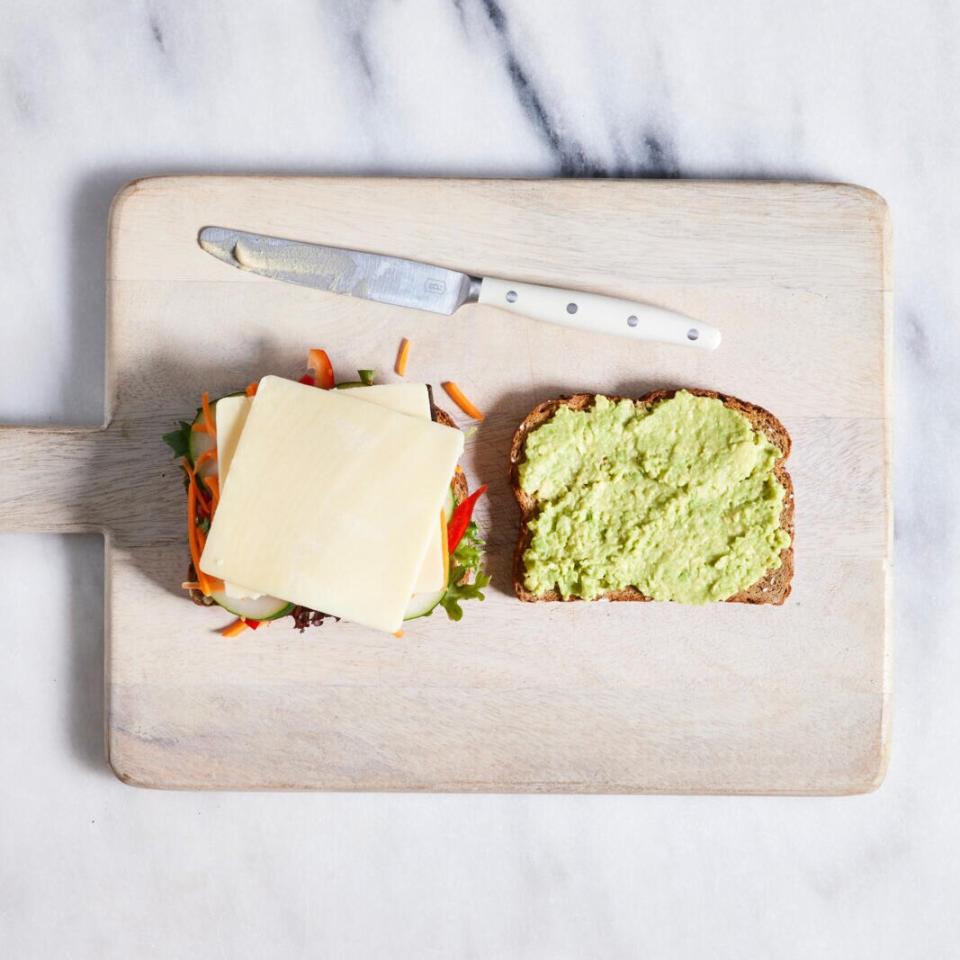
Photographer / Jen Causey, Prop Stylist / Claire Spollen, Food Stylist / Ali Ramee
Here are some cheeses to try:
Brie
Cheddar
Mozzarella
Parmesan
Provolone
Swiss
Step #5: Slice It Up
Whether you're team horizontal, vertical or diagonal, you can slice your sandwich in whatever direction your heart desires. Or, depending on the sandwich, you may not even need to cut it. If you are cutting your sandwich, make sure to use a bread knife or other sharp knife that can slice through all the layers with ease.
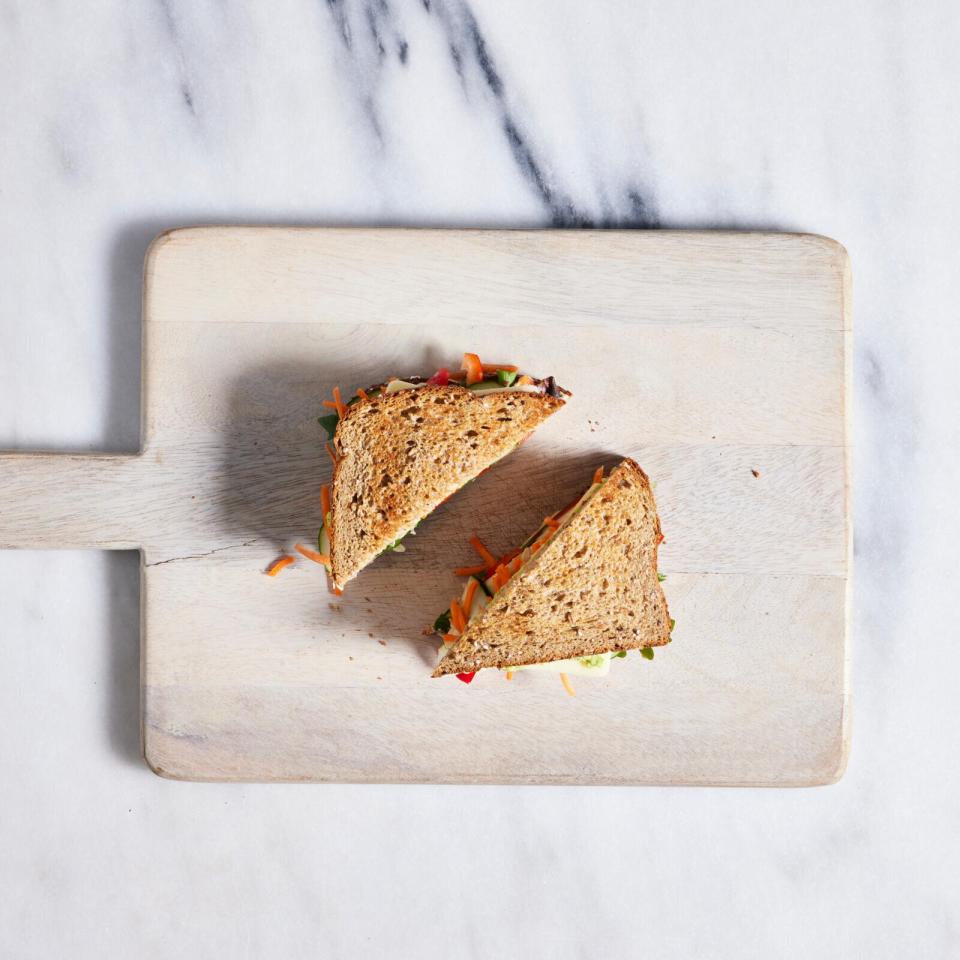
Photographer / Jen Causey, Prop Stylist / Claire Spollen, Food Stylist / Ali Ramee
Recipes to Try
Cucumber Sandwich
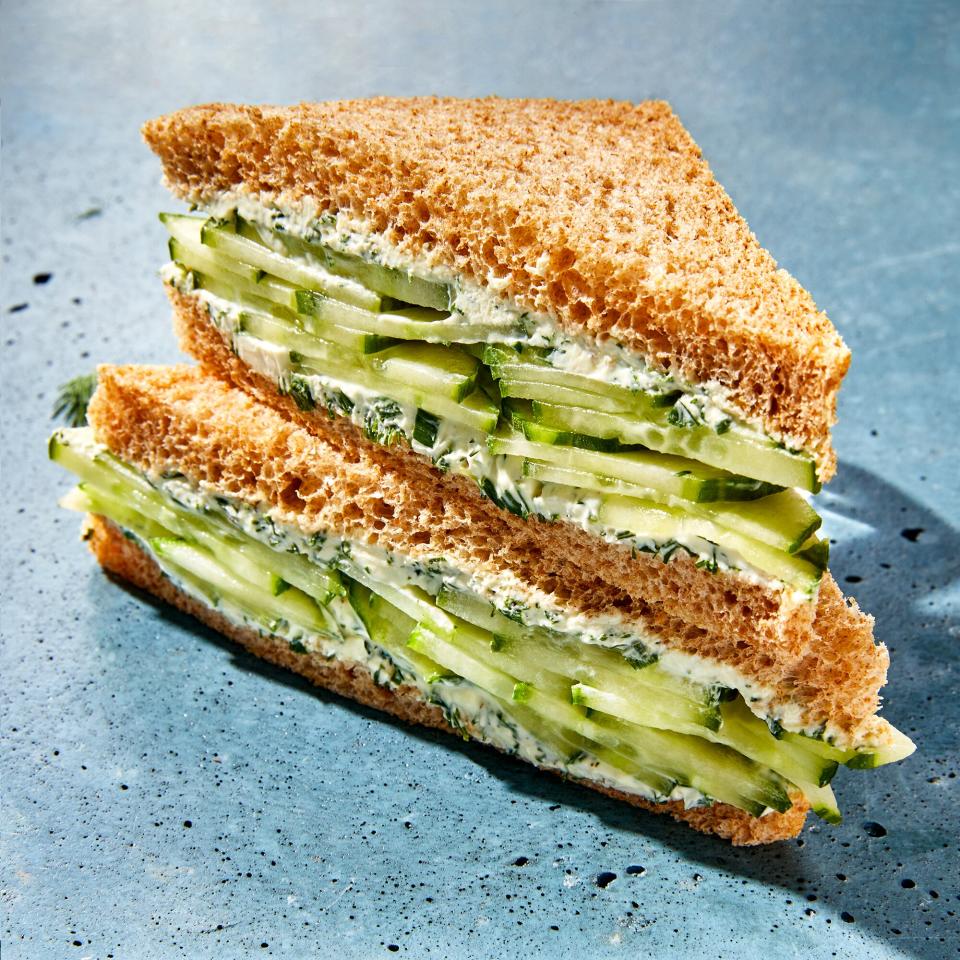
White Bean & Avocado Sandwich
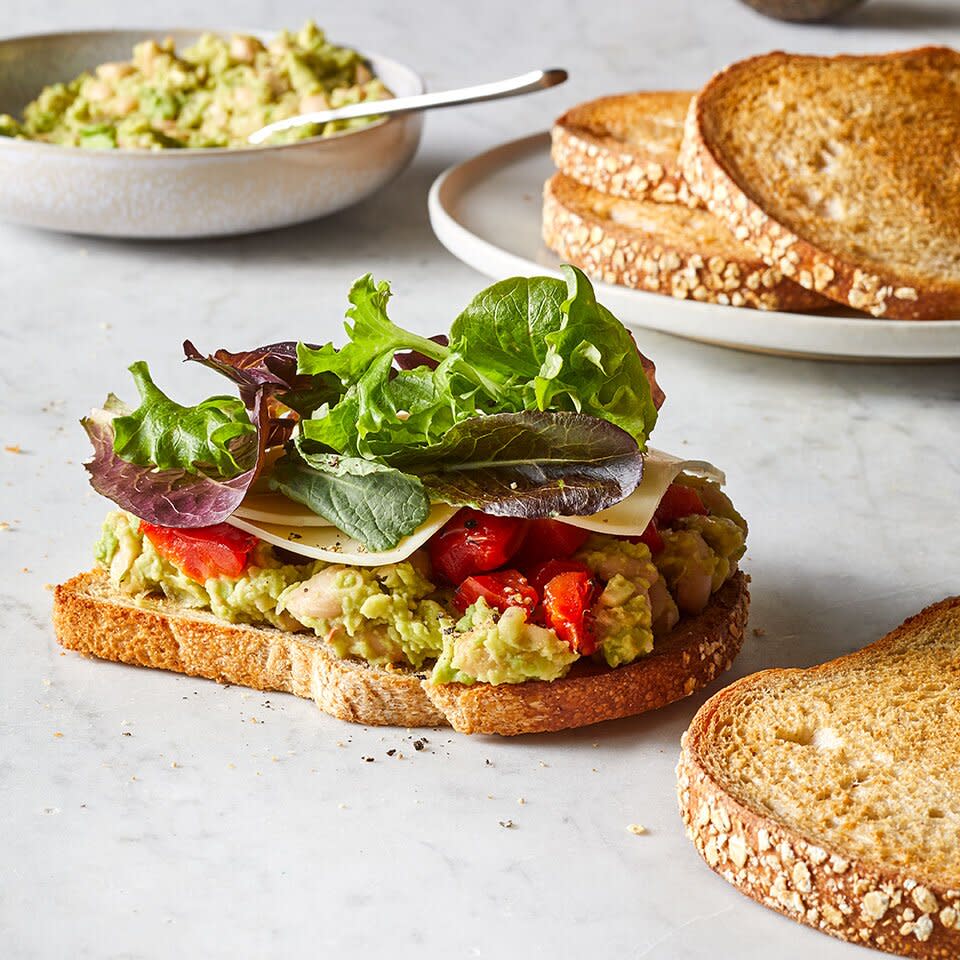
Veggie & Hummus Sandwich
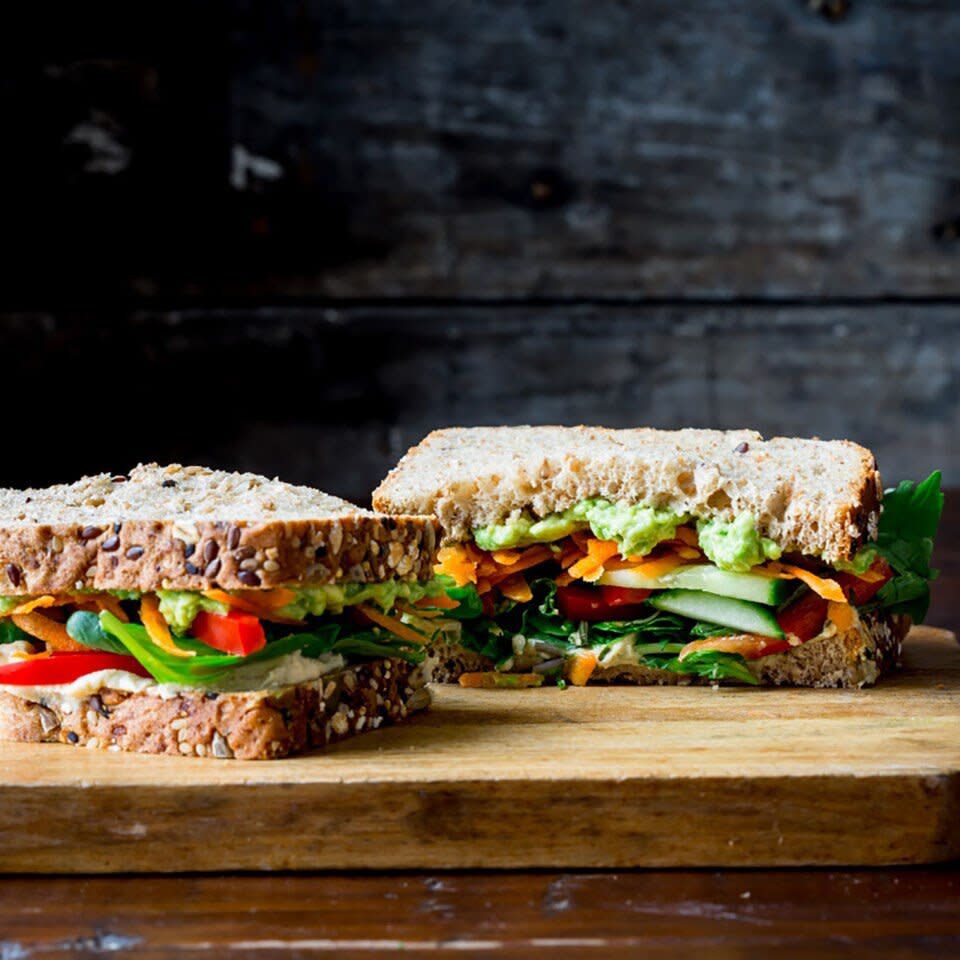
Tomato-&-Avocado Cheese Sandwich
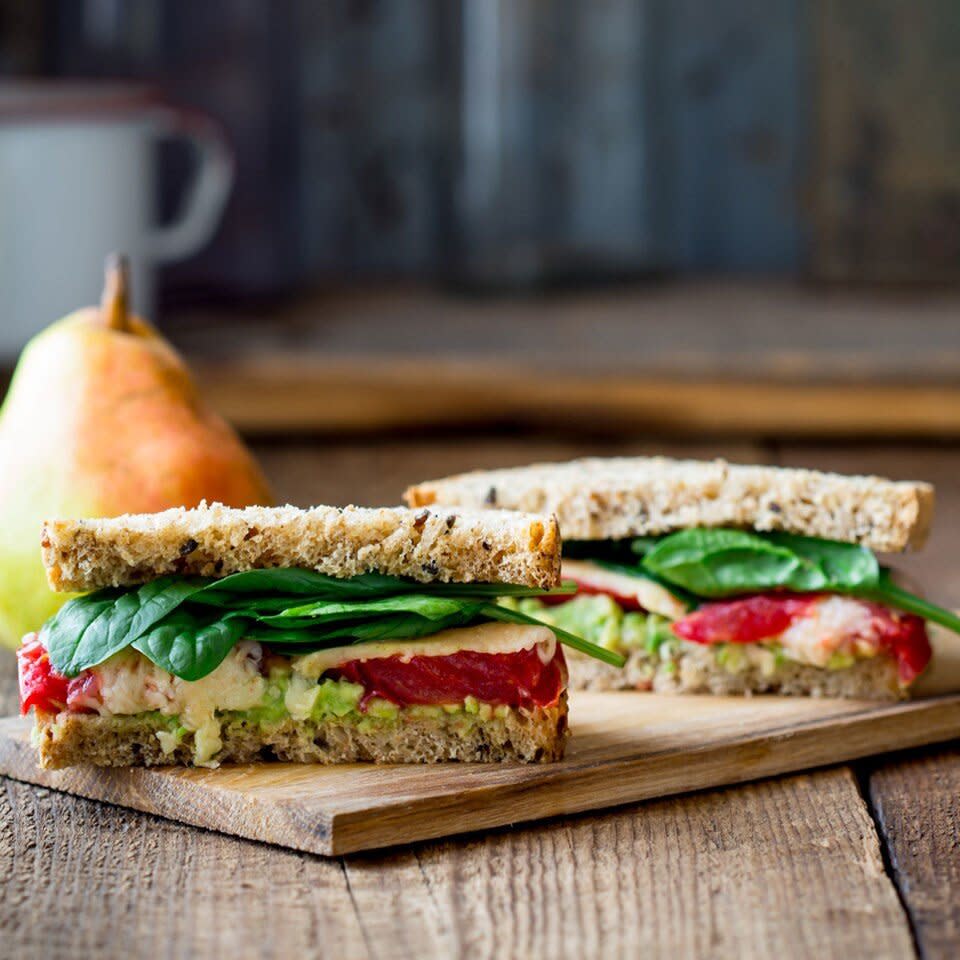
Veggie Sandwich
